Mt. Everest (8,848 m) is the highest mountain in the world, and honestly, who doesn’t know this? So, getting to the base camp is indeed everyone’s dream, isn’t it? Many of us wouldn't say no to visiting the tallest buildings in the world. Now, compare them with Mt. Everest—you’ll notice a significant difference for sure.
When you’re doing the 14 Days Everest Base Camp Trek, you won’t just see Mt. Everest (8848.86) but there’s a panoramic view of the tallest mountains in the world, like Lhotse (8516 m), Lhotse Shar (8393 m), Nuptse (7861 m), Tengi ragi tau (6983 m), Ama Dablam (6814 m).
During this trek to Everest Base Camp, you’ll be hiking in the Khumbu region inside the Sagarmatha National Park premises. So, expect to see a variety of flora and fauna. Some of these include red panda, snow leopard, musk deer, Himalayan tahr, marten, Himalayan mouse hare (pika), Impeyan pheasant, snow cock, blood pheasant, red billed cough, etc.
That’s not about it. You’ll be immersing yourself in the Sherpa community throughout your trekking days, and there’s so much to learn from them.
The journey to the Everest Base Camp begins after your arrival in Kathmandu. You’ll fly to the world’s most thrilling Lukla Airport. From here, the foot trails begin, and you’ll be walking for almost 10 days.
This EBC trail takes you towards Phakding, Namche Bazaar, Tengboche, Dingboche, Lobuche, and Gorak Shep. Finally, at the end, you’ll be reaching the tremendously popular Everest Base Camp and Kala Patthar for jaw-dropping views of the Himalayas.
Since the EBC Trek’s difficulty is considered strenuous, you’ll have to prepare for the trek in the best way possible. Manage the packing list before even starting the trekking, and make sure that you are physically and mentally strong for the Everest Base Camp trek.
And if you’re guessing on the price, you might have already had a glance at the right-most part of your computer screen. The cost for the EBC Trek cost ranges from $1210 to $1490 per person, the best price you’ll find in Nepal for sure.
Mount Glory is already excited to share the rest of the story via this article. So, sit back as we’re about to begin a comprehensive guide on the Everest Base Camp Trek.
Major Highlights of Everest Base Camp Trek
- Step into the base of the world's highest peak, Mount Everest (8848m), and witness the legendary Khumbu Icefall.
- Experience the thrilling flight to Lukla, one of the world's most adventurous airports.
- Enjoy the panoramic views of Everest, Lhotse, and Ama Dablam from the famous Everest View Hotel (3880m).
- Explore Namche Bazaar, the bustling Sherpa town and trade hub of the Khumbu region.
- Visit the iconic Tengboche Monastery, a spiritual haven with breathtaking mountain backdrops.
- Trek through picturesque villages like Dingboche and Lobuche, surrounded by towering peaks.
- Immerse yourself in Sherpa culture, traditions, and the rich heritage of the Himalayan people.
- Ascend to Kala Patthar (5644m) for the best sunrise views of Mount Everest and its neighboring giants.
- Trek through the Sagarmatha National Park, home to rare wildlife, dense rhododendron forests, and the pristine Dudh Koshi River.
- Enjoy scenic aerial views of the Himalayas on the return flight from Lukla to Kathmandu.
Why EBC Trek is a Must-Do Adventure?
Getting to the base camp of the tallest mountain in the world (i.e. Mount Everest) is a dream for many. And if you are here to read this article, we’re pretty sure you have this dream too.
If you already have prior experience hiking in the high-altitude region of Nepal and still have not done the Everest Base Camp Trek, you’re seriously missing out! So, hesitate no more now.
Just hit the Reserve Now button and Mount Glory shall be all excited to serve you.
Of course, there are risks but that shouldn’t hold you back. Everest Base Camp takes you so close to Mt. Everest and its mesmerizing Himalayan view shall stun you for not just days or weeks, but for a lifetime.
Come to Nepal, and let’s do this EBC trek together. We’re excited and hope you are too!
Why Choose Mount Glory Treks for EBC Trek?
Mount Glory has a team of highly experienced and licensed guides with extensive knowledge of Mount Everest and the entire Khumbu region. So, choosing us has plenty of advantages.
For the EBC Trek, we provide customizable itineraries to suit different preferences, trekking durations, and skill levels. The guides assigned by Mount Glory have proper acclimatization plans and they follow contingency measures for your safety.
Even the pricing is competitive and transparent, meaning there are no hidden costs for this EBC Trek. You also don’t have to worry about exceptional customer service, from pre-trek planning to post-trek support.
During your 14-day EBC trek, you’ll get to see Mount Glory’s established partnerships with local communities in the Everest region, contributing to sustainable tourism. Since the Everest Base Camp trek requires quality gear, comfortable accommodation, and nutritious meals, our representatives shall provide that to you as well.
Everest Base Camp Trek Hidden Gems & Must-See Attractions
While the Everest Base Camp route is naturally attractive for sure, there are some other cultural factors that you need to understand before heading to do this trek. We’ve listed the important ones for the time being:
- Religions: Hinduism and Buddhism
- Festivals: Dashain, Tihar, Mani Rimdu Festival
- Ethnic Groups: Sherpas, Rais, Tamangs, Brahmins, and Chhettris
Don’t hesitate to ask our guide and porters to learn more in-depth. This shows the importance of these professionals—they’re not just there to help you with the climb but also offer you the best pieces of information.
Now that you’ve learned about the cultural attractions, let’s peek into the natural as well as artificial attractions that make the Everest Base Camp trek a must-do adventure.
Most Thrilling Lukla Airport (Tenzing-Hillary Airport)
When you’re doing the 14-day Everest Base Camp, the first task is to get to the nail-biting Lukla Airport, which is considered the most thrilling in the world because of its landing.
Named after Tenzing Hillary, the airport’s actual name is Tenzing-Hillary Airport, and it also marks the start of the very popular Everest Base Camp tour.
Secrets of Everest Base Camp Hike’s Villages
As soon as you’re on the trails of the EBC, you’ll get into the villages with rich cultural heritage. Monjo is the entry point of Sagarmatha National Park, which is inside the UNESCO World Heritage site.
After that, the EBC hike leads to Namche Bazaar, which is considered the ‘gateway to Everest’. A town full of Sherpa community and a tourist hub for both trekkers and climbers.
Other Sherpa villages seen on the Everest Base Camp Trekking Trail include Phakding, Tengboche, Lobuche, Gorak Shep, and Pheriche. Each of these locations holds significant importance.
Get the Sight of the Highest Placed Everest View Hotel 3880m
While along the trail and during your acclimatization day, you have the option to visit some other locations as well. One of the highlights is the Everest View Hotel at 3,880 m. From here, the entire Everest Base Camp route is seen, along with the panoramic mountain views.
Reportedly, Everest View Hotel has its name written in the Guinness Books of World Records. Hence, it’s not a spot to miss during your Everest Base Camp hiking adventure.
Explore EBC Trail’s Monasteries & Monuments
Besides the five-star hotel, there’s more to explore in the Everest region. These landmarks include all the monasteries, temples, and museums along the way.
Of course, you can visit each of these religious sites, but make sure to show respect. The most remarkable Everest Base Camp nearby landmarks include Tengboche Monastery, Khumjung Monastery (where a Yeti scalp is found), Sherpa Culture Museum (in Namche Bazaar), Pangboche Monastery (the oldest in the region).
The World’s Iconic Everest Base Camp at 5,364 m
Only after hiking continuously for 7-8 days, you reach one of the final EBC destinations, Everest Base Camp, which is at an elevation of 5,364 m. We’re pretty sure that seeing the iconic board, you’ll scream with joy.
Once you reach the Everest Base Camp, you can tons of pictures and videos. You’ll even get to meet the mountaineers who probably would be preparing for their Mt. Everest summit.
Sunrise Over Everest: The Brilliant Kalapatthar View Point 5555m
While getting the Everest Base Camp is a great achievement in itself, there’s still more to more. The highest of the 14-day EBC Trek is actually the magnificent Kalapatthar View Point at an altitude of 5555 m.
You’ll be hiking to this part of the Everest region in the early morning such that you don’t miss the truly blissful sunrise. The view from the top is extremely beautiful, an experience of a lifetime for sure.
Beyond Everest: The Towering Peaks Seen From EBC Trails
If you’re in the right season, the EBC trails shall offer some of the majestic views of the Himalayas of Nepal. That’s what you’re in Nepal for, aren’t you?
Besides Kala Patthar and the iconic Everest Base Camp location, you’ll even get to climb the nearby Nangkartshang Peak at 5,083m. Some other optional Everest hiking landmarks include Chhukung Ri and Ama Dablam Viewpoint.
Considering all the mountains seen during your Everest Base Camp trekking tour, here’s a list of them: Mt. Choyou, Lhotse, Nuptse, Thamserku, Amadablam, Kwangde, Kusum Kangaru, Cholatse, Lobuche, Tabuche, Island, Pumori, and Mt. Everest.
Besides the mountains, the Everest Base Camp tour also promises to show you the Khumbu Glaciers and Khumbu Icefall. Your trekking in the Everest region is beyond what words can describe.
Everest Base Camp Trek Cost Breakdown for 2025 & 2026
Now, let’s talk money! You’ve probably got your eyes on the right-hand side of the screen. We know that!
Tell us from your side–don’t you think USD 1490 for such a wonderful 14-day Everest Base Camp is worth every penny? We truly believe that this is the best budget price you’ll find on the internet.
Mount Glory is already the best in terms of hospitality and servicing, which you should have figured out after reading this comprehensive guide.
But if you’re still hesitant about the price, don’t just skip the page. We’re leaving our contact number and hoping to hear from you soon: +977 9849856378. Call us or send us a Whatsapp message. Mount Glory is always there for our guests.
Note that the government of Nepal had recently increased the climbing fee of Mount Everest. And for that reason, the overall cost of the Everest Base Camp trek has also increased slightly.
Please follow the below group price details of Everest Base Camp Trek in the year 2025 & 2026
| No of Pax | Cost Per Person | Inquiry |
| 1-1 | USD 1490 | Inquire Now |
| 2-3 | USD 1350 | Inquire Now |
| 4-6 | USD 1290 | Inquire Now |
| 7-9 | USD 1250 | Inquire Now |
| 10-20 | USD 1210 | Inquire Now |
Note: If travelers are more than 20 in a group they can directly contact our operation team for a special group discount offer.


.webp)
.webp)
.webp)
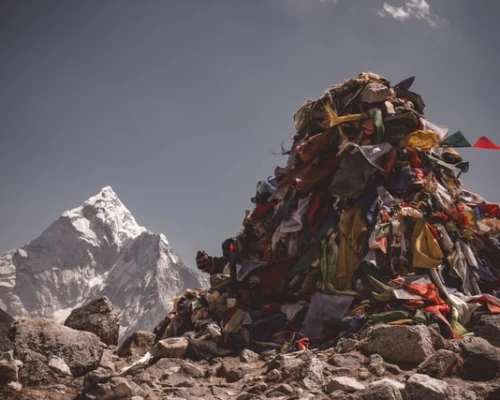
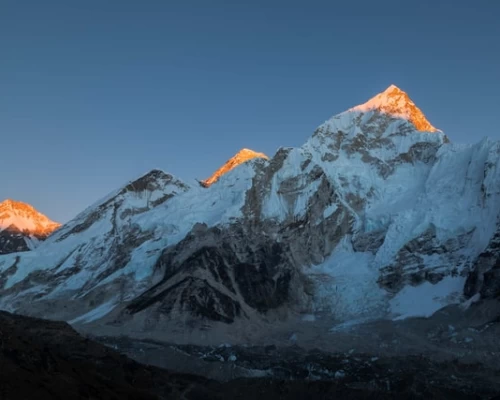
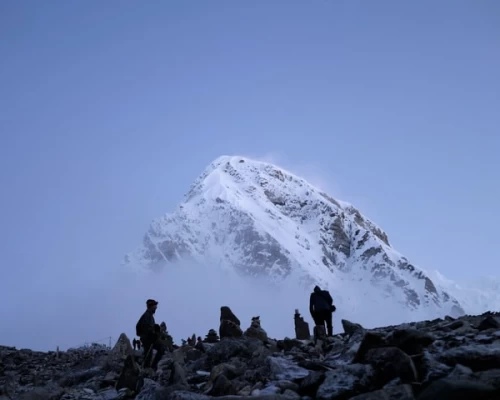
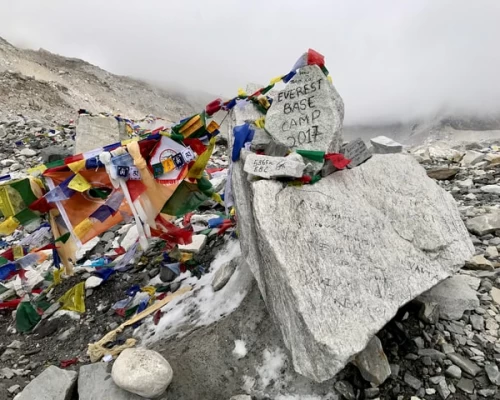
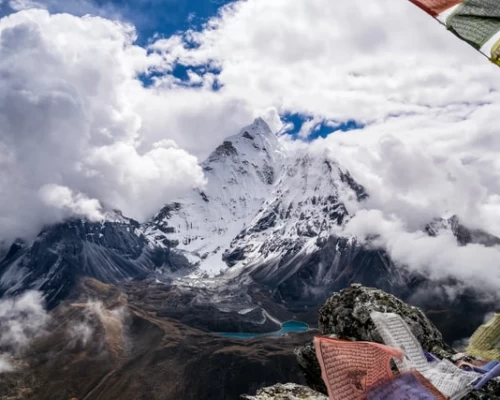
.webp)
.webp)
.webp)
.webp)
.webp)
.webp)









